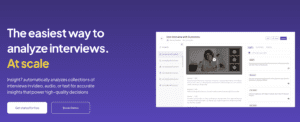7 B2B Research Matrix Templates Generated With AI
-
Caleb Oranye
- 10 min read
In the dynamic world of B2B marketing, understanding the customer is paramount to success. As organizations strive to tailor their offerings and strategies to meet the unique needs of their business clients, the role of research matrices becomes increasingly important. These matrices are not just tools for organizing data; they are the compasses that guide companies through the complex terrain of customer behavior, preferences, and pain points. In this exploration, we delve into the value of research matrices and introduce seven innovative B2B research matrix templates that have been generated with the help of artificial intelligence (AI), offering a fresh perspective on customer data analysis.
The Value of Research Matrices in B2B
Research matrices are versatile tools that allow organizations to categorize and analyze various data points related to their customers. By systematically arranging information, businesses can identify patterns, trends, and correlations that might otherwise go unnoticed. In the B2B context, where transactions are often characterized by longer sales cycles and higher stakes, the insights gleaned from research matrices can be crucial in developing effective strategies.
For product managers, marketers, and sales teams, research matrices provide a structured approach to understanding the market, competition, and customer needs. They enable the creation of detailed user and buyer personas, help in visualizing product opportunities through opportunity solution trees, and facilitate the extraction of customer insights that drive decision-making. When combined with the power of AI, these matrices transform into even more potent instruments, capable of handling vast amounts of qualitative and quantitative data with precision and speed.
AI-Enhanced B2B Research Matrix Templates
The integration of AI into research matrix tools has revolutionized the way organizations approach data analysis. AI algorithms can sift through data, recognize patterns, and even predict future trends, providing a level of insight that is invaluable in the B2B sector. Below are seven AI-generated research matrix templates that can help organizations elevate their research capabilities:
💬 Questions about 7 B2B Research Matrix Templates Generated With AI?
Our team typically responds within minutes
- Customer Segmentation Matrix: This template leverages AI to segment customers based on various criteria such as industry, company size, and purchasing behavior. It helps businesses tailor their marketing efforts and product development to specific segments.
- Competitive Analysis Matrix: Utilizing AI, this matrix compares an organization’s offerings with those of its competitors, highlighting strengths, weaknesses, and potential areas for improvement.
- Product-Market Fit Matrix: AI analyses market data and customer feedback to assess the alignment between a product and its target market, guiding product managers in refining their product strategies.
- Buyer Journey Mapping Matrix: This template uses AI to map out the typical journey of a B2B buyer, from awareness to decision, allowing companies to optimize touchpoints along the way.
- Feature Prioritization Matrix: By evaluating customer needs and market demand, AI helps prioritize product features and development efforts, ensuring that the most impactful features are delivered first.
- Risk Assessment Matrix: AI assesses potential risks associated with market trends, customer behavior, and competitive moves, enabling businesses to proactively address challenges.
- Innovation Opportunity Matrix: This matrix identifies new market opportunities and niches by analyzing emerging trends and unmet customer needs with the help of AI.
Implementing AI-Generated Research Matrices
Adopting these AI-generated research matrix templates is not just about having the right tools; it’s about embracing a mindset that values data-driven decision-making. Organizations must be willing to invest in AI technology and train their teams to interpret and utilize the insights effectively. Moreover, aligning with the principles of E-E-A-T (Experience, Expertise, Authoritativeness, Trustworthiness) ensures that the data analysis is not only comprehensive but also credible and reliable.
In essence, to implement these templates, product managers and marketers should start by identifying the specific objectives of their research. They must then select the appropriate matrix template that aligns with those objectives. Once the template is in place, data can be inputted, and the AI can begin its work of analysis and interpretation. The resulting insights should be used to inform strategic decisions, from product development to marketing campaigns.
Get a glimpse of Insight7 in action: Watch a couple of our 1-minute demos below.
Get Started for free today or Book a demo
Conclusion
In conclusion, the intersection of AI and research matrices offers B2B organizations a powerful avenue to deepen their understanding of customers and the marketplace. Lastly, by leveraging these AI-generated templates, businesses can gain a competitive edge through sophisticated data analysis and strategic insight. Finally, as the B2B landscape continues to evolve, those who harness the potential of AI-enhanced research matrices will be well-positioned to thrive in an increasingly data-driven world.
💬 Questions about 7 B2B Research Matrix Templates Generated With AI?
Our team typically responds within minutes



